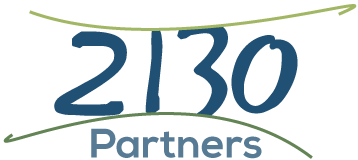 Collaboration is a hot topic these days. When it comes up people tend to nod their heads and affirm “ah yes, collaboration, I know what that means,” and then immediately turn around and do something distinctly uncollaborative.
Because we believe collaboration is fundamental to the new model of leadership we want to explore ingredients we believe are necessary to set the context for a collaborative environment.
Collaboration is a hot topic these days. When it comes up people tend to nod their heads and affirm “ah yes, collaboration, I know what that means,” and then immediately turn around and do something distinctly uncollaborative.
Because we believe collaboration is fundamental to the new model of leadership we want to explore ingredients we believe are necessary to set the context for a collaborative environment.
To begin, we believe to even get started collaborating there must be an atmosphere of mutual trust, respect, and safety. This is something when raised with clients often gets a lot of heading nodding and affirmation of understanding, and then almost immediately someone does something that is counterproductive to this context. So if your reaction is “oh yes, I already know what that is” check yourself. Do you really know or is that thought one that Suzanne Frindt would call “instant, automatic and unexamined” – more of a reaction than deep understanding?
In order to diagnose the level of mutual trust, respect and safety within your team and organization you will need to be a bit of a detective. We always recommend starting any inquiry with yourself first. So try an experiment and self-observe for a day. When you are engaging with others are you aware of your body language, your body sensations, the thoughts racing through your head as you speak and the physical responses of your listener? Do you even really hear your own words? Your tone of voice? Can you identify where you are “coming from?” Your frame of mind? Your agenda? These questions are simple but not necessarily easy to practice. If the truth is that your communication just pours out and you’ve never even thought to examine it, start by actually listening to yourself as you speak. If you feel successful observing yourself in this way then see if you can also “be responsible for what get’s heard” (one of our basic Operating Principles – get a free download of them here). What look do you see on the face of the person you are speaking with? Do they sit forward or back after you speak? Do their eyes sparkle or go flat? These are simple tests as to how safe it is to engage with you at that moment.
After learning how well you create an atmosphere of mutual trust, respect and safety with those you work with, it’s important to consider the whole team. The best test I know of regarding safety in a conversation with a group is “is there anything you wouldn’t share?” If so, that is the degree to which it is not safe. I am not saying you must be able to spill your guts. In professional environments it’s important to be open, but not necessarily personal. So we are not talking about exposing your deepest darkest personal history. Often in groups, people don’t even feel safe giving honest professional feedback about an idea that is on the table. If you can’t provide your honest perspective on the direction of the business, or a new product or service, then it’s not safe. By observing your willingness to be open you will have a conscious measure of safety.
So how safe is your work environment? Do you and your team interact within a framework of mutual trust respect and safety? If not, this is a critical piece to start building if you want to become truly collaborative.
